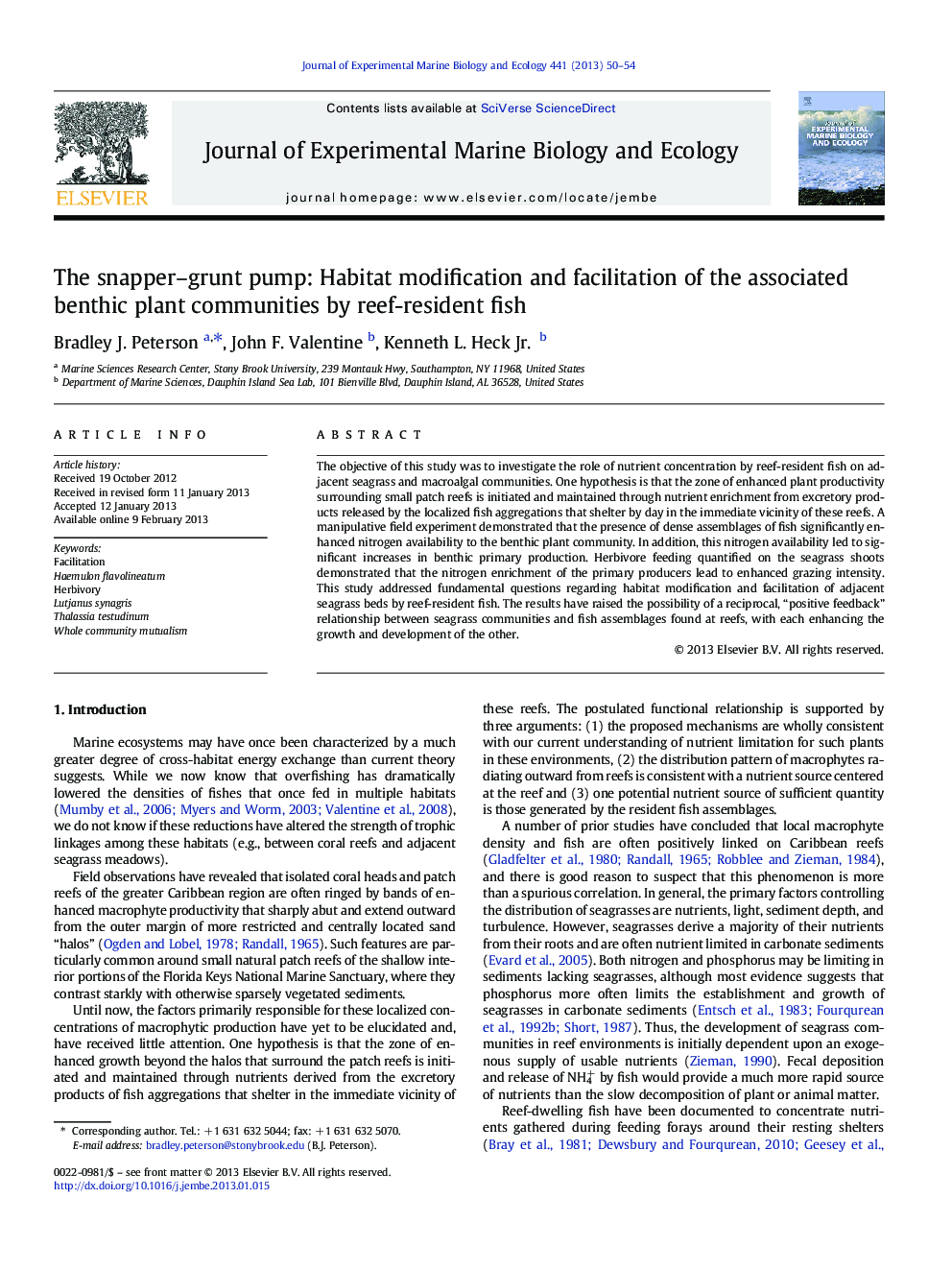| Article ID | Journal | Published Year | Pages | File Type |
|---|---|---|---|---|
| 4395752 | Journal of Experimental Marine Biology and Ecology | 2013 | 5 Pages |
The objective of this study was to investigate the role of nutrient concentration by reef-resident fish on adjacent seagrass and macroalgal communities. One hypothesis is that the zone of enhanced plant productivity surrounding small patch reefs is initiated and maintained through nutrient enrichment from excretory products released by the localized fish aggregations that shelter by day in the immediate vicinity of these reefs. A manipulative field experiment demonstrated that the presence of dense assemblages of fish significantly enhanced nitrogen availability to the benthic plant community. In addition, this nitrogen availability led to significant increases in benthic primary production. Herbivore feeding quantified on the seagrass shoots demonstrated that the nitrogen enrichment of the primary producers lead to enhanced grazing intensity. This study addressed fundamental questions regarding habitat modification and facilitation of adjacent seagrass beds by reef-resident fish. The results have raised the possibility of a reciprocal, “positive feedback” relationship between seagrass communities and fish assemblages found at reefs, with each enhancing the growth and development of the other.
► Fish aggregations significantly enhanced nutrient availability to benthic plants. ► Nitrogen enrichment of the primary producers leads to enhanced grazing intensity. ► “Positive feedback” between seagrass and fish assemblages at reefs is suggested. ► The critical “limiting” resource provided by the reef may be food rather than shelter.
